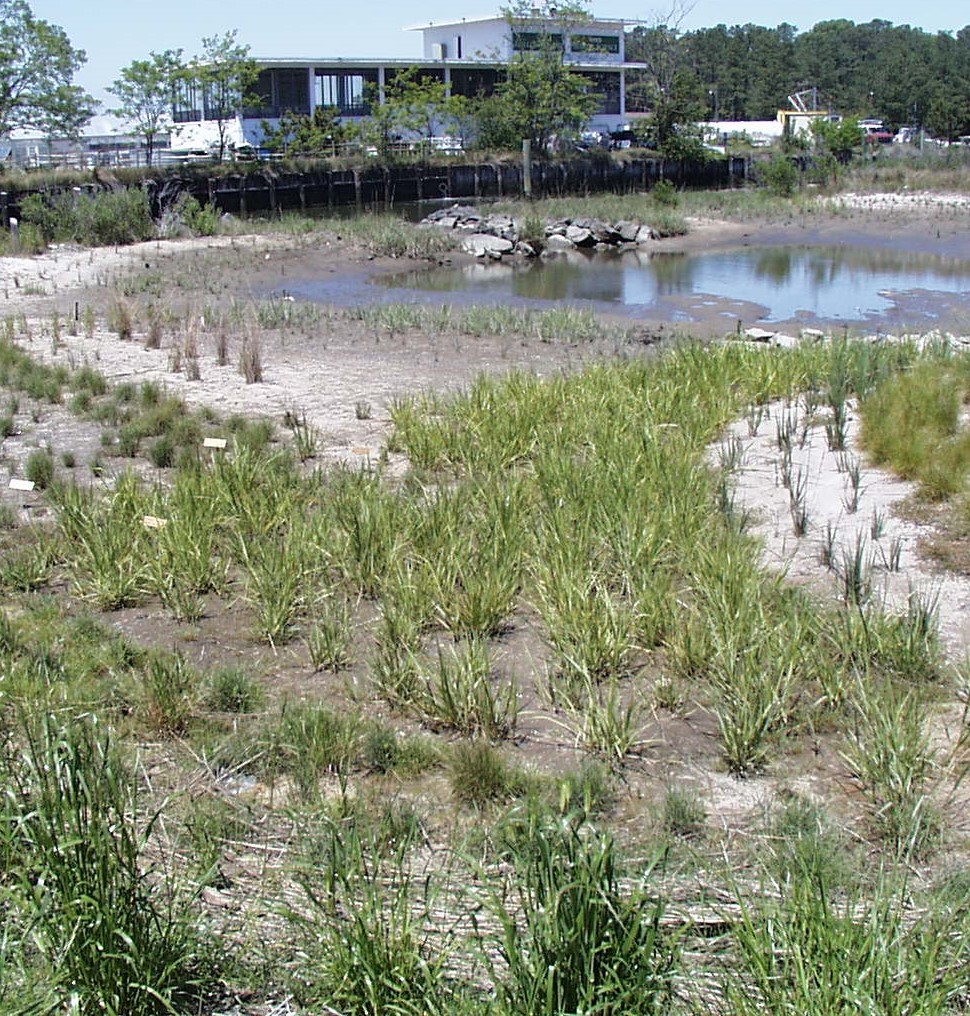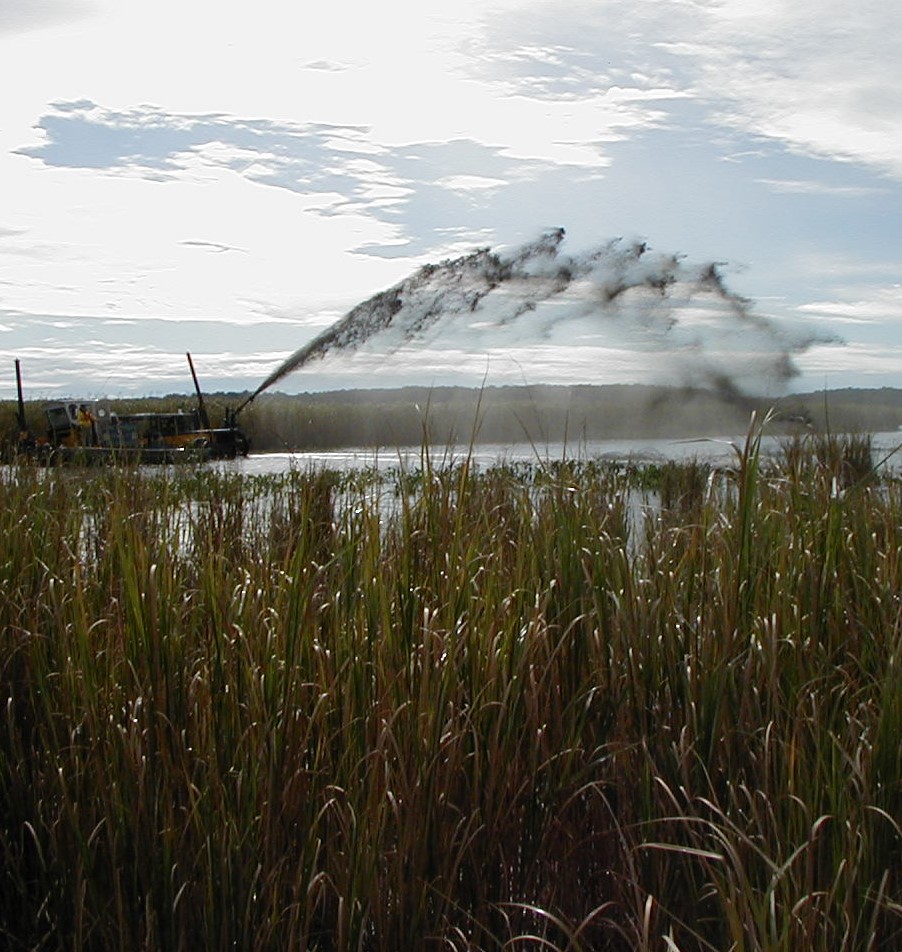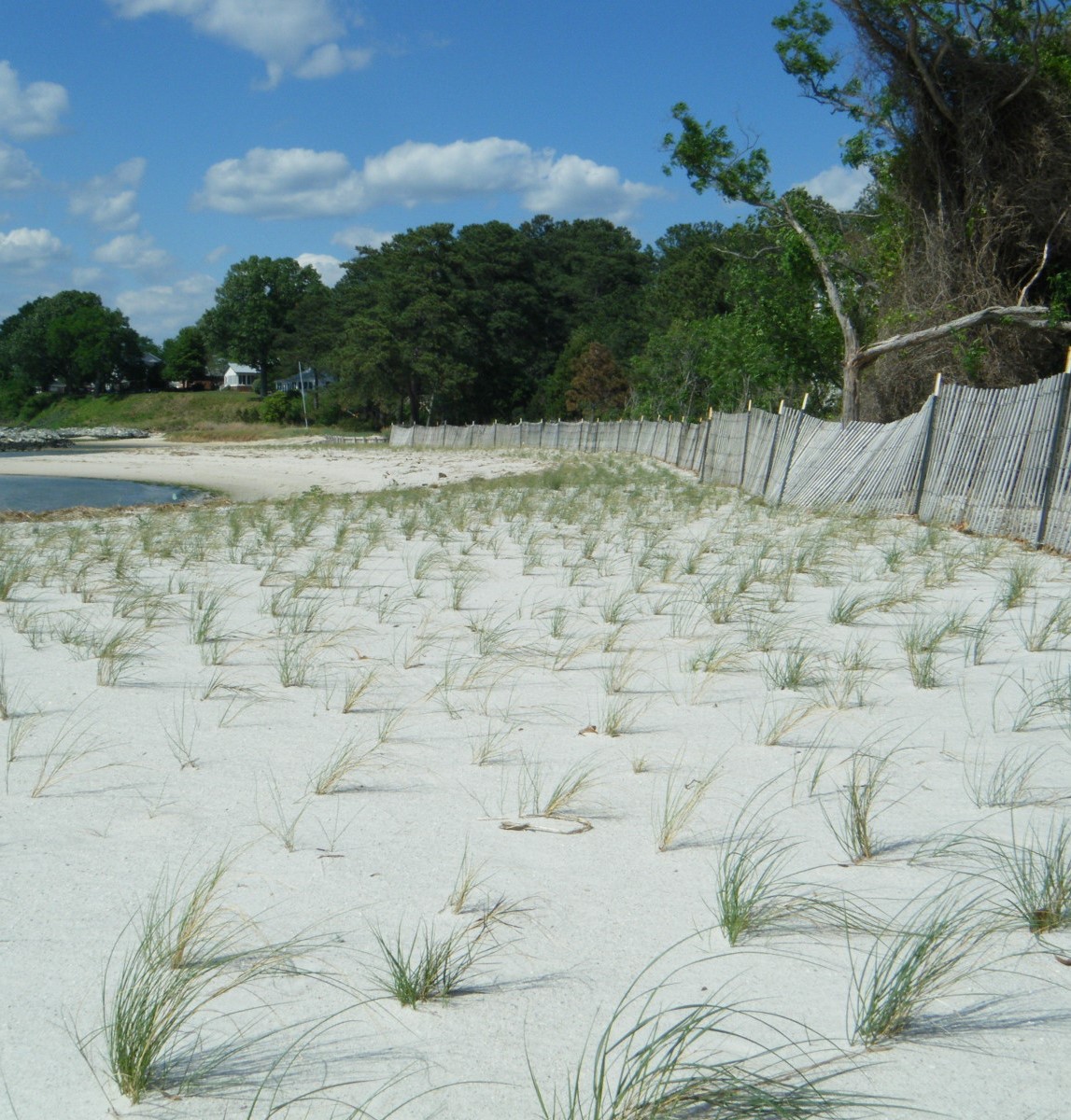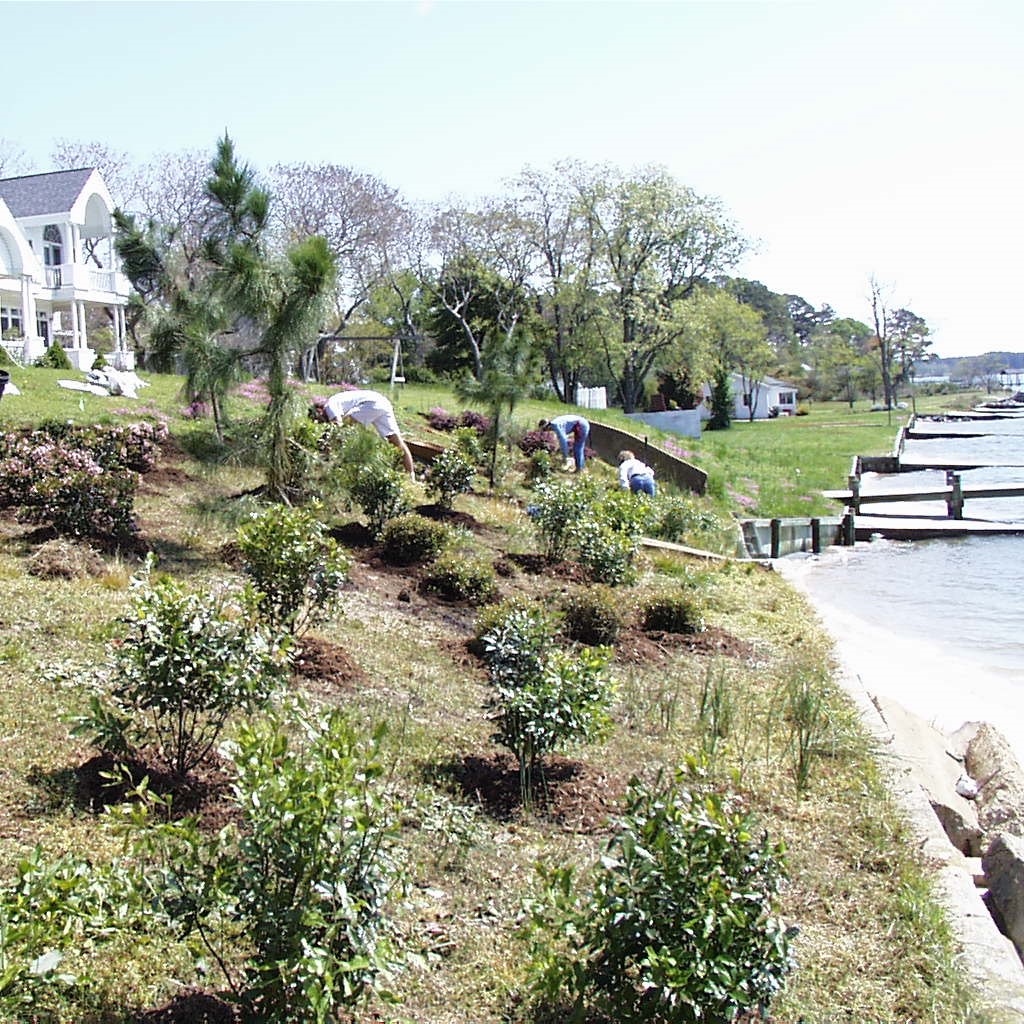Restoration for Resilience & Funding
How do habitat and climate adaptation projects fit into the permit process?
Most shoreline habitat restoration, creation or rehabilitation projects are intended to result in a net gain of resource area and a net improvement of ecosystem services such as fish and wildlife habitat, water quality improvement, erosion control and flood mitigation. Restoration projects for resilience include projects like living shorelines, wetland creation and restoration, beach and dune nourishment and creation, and oyster restoration. These projects require permits because no matter the intent, all shoreline activity results in some impacts to the existing resources. The permit process was established to avoid, minimize and compensate for adverse impacts on shoreline resources. Specialized general permits have been developed to simplify and promote restoration efforts. Restoration project reviews through the permit process enable management programs to ensure that adverse impacts are offset by resource and ecosystem service gains.
Living Shorelines Permits – Living shorelines are nature-based approaches for shoreline protection
|
Resiliency Project Database – A database of identified resiliency projectsWetlands Watch is working collaboratively to build the database with funding support from the Virginia Coastal Zone Management Program to include wetlands creation, living shorelines, beach nourishment and other natural and nature-based activities. |
Adaptation Stories – Learn more about resiliency projects in Virginia and elsewhereStory maps on ADAPTVA show how adaptation works, and can be financed, through zoning, planning, engineering, and policy practices. |
Know Your Resources
Support for voluntary efforts to create or restore wetlands and shoreline habitats...
Wetlands Restoration
|
Beach/ Dune Restoration
|
Riparian Buffer Restoration
|
Project Funding & Incentives
Programs and incentives for using living shorelines and natural shoreline features for erosion control, water quality and other benefits.
Conservation Reserve Enhancement Program (CREP) – cost share programThe Conservation Reserve Enhancement Program is a state-federal partnership that provides financial incentives for the establishment of conservation practices on agricultural lands to improve water quality, protect environmentally sensitive lands, restore habitat and decrease erosion. Wetland restoration and riparian forest buffer restoration are eligible practices. Funds are available for federal incentive payments, cost-share payments, and rental payments. It is a national program administered by the Farm Service Agency, part of the United States Department of Agriculture. The Natural Resources Conservation Service, United States Department of Agriculture, can assist with design. The Virginia Department of Forestry provides advice on trees species and planting, while the Soil and Water Conservation Districts administer the state cost share and state rental payment in collaboration with the VA Department of Conservation and Recreation. |
Virginia Conservation Assistance Program (VCAP) – cost share programThe Virginia Conservation Assistance Program is an urban cost-share program that provides financial incentives and technical and educational assistance to property owners installing eligible Best Management Practices (BMPs) to improve water quality. Living shorelines and constructed non-tidal wetlands are eligible practices in the Program. VCAP practices can be installed in areas of your yard where problems like erosion, poor drainage, or poor vegetation occur. Most practices are eligible for 75% cost-share. The Program is run by Soil and Water Conservation Districts (SWCDs) in participating districts. SWCDs are political subdivisions of the State which manage conservation programs, employ staff and deliver free conservation services, many aimed at the control and prevention of non-point source pollution. The SWCDs collaborate with Department of Conservation and Recreation on soil and water conservation programs. |
The Virginia Clean Water Revolving Loan Fund (CWRLF) – low interest loansThe CWRLF may be used to provide low interest loans for activities to protect or improve water quality and prevent pollution of state waters. The Fund is administered by the Department of Environmental Quality and managed by the Virginia Resources Authority. The establishment of a living shoreline qualifies as an eligible activity of CWRLF. Loans may be made to a local government or local funding program. Loans to local governments are used by the government to establish a living shoreline. Loans to a local funding program can be used to provide low interest loans for individual citizens or certain businesses. An eligible business needs to be located within a locality in the Rural Coastal Virginia Community Enhancement Authority. |
National Fish and Wildlife Foundation (NFWF) – grantsThe National Fish and Wildlife Foundation provides grants for conservation projects nationwide. Through the grant process they engage partners from diverse sectors including governmental agencies, non-profits, industry and individuals. NFWF has several grant programs that can support tidal shoreline habitat creation and restoration, including living shorelines, marsh, beach and dune restoration, and riparian forest buffer restoration. The conservation programs related to these projects are:
|
Local Government Tax IncentivesThe Commonwealth of Virginia authorizes two local government tax incentives for living shorelines.
|
Total Maximum Daily Load Best Management Practices – incentive for shoreline featuresThe Chesapeake Bay Program operates under the Chesapeake Bay agreement and Virginia is a signatory to the agreement. The Chesapeake Bay has a Total Maximum Daily Load (TMDL) to restore clean water to the Bay and tributaries. Pollutants enter the Bay waters directly by commercial, industrial and municipal discharges, point source pollution, and indirectly via overland runoff, non-point source pollution. Actions to reduce or eliminate pollution from stormwater runoff are known as Best Management Practices (BMPs). Implementation plans identify actions to reduce pollution including BMPs. Living shorelines with a created marsh, nontidal wetlands restoration and riparian forest buffer restoration are all practices that have been approved for nutrient and sediment pollution removal rates. The values for BMP pollution removal are tracked as part of the accounting for each Bay signatory through the Watershed Implementation Plan process. A Total Maximum Daily Load (TMDL) is the amount of pollutants that a waterbody can receive without changing the conditions that would cause it to exceed water quality standards. Water quality standards define levels of nutrients, toxicants, sediment and other elements and compounds that need to be maintained for the waters to be used in various ways – from fishing and swimming to drinking water (known as designated use). If the waterway has pollutant levels that are higher than the standard, a TMDL Implementation Plan is required. Multiple groups including local governments, soil and water conservation districts, planning district or regional commissions, community watershed groups, and state and federal agencies assist in the development of Implementation Plans (IPs) plans to restore the waterway. The Chesapeake Bay Program provides a fact sheet on the Shoreline Management BMP as applies to erosion control practices. The greatest reductions are for Living Shorelines (Shoreline Erosion Control Vegetated) |


 Information on
Information on  Thin Layer Placement is the placement of sediment or dredged material in order to produce an elevation surface to support wetland conditions and promote the establishment or persistence of wetland vegetation. Thin layer placement is one management option for beneficial use of dredged material. This practice has been employed in coastal areas within the Chesapeake Bay region, Atlantic and Gulf Coasts and elsewhere.
Thin Layer Placement is the placement of sediment or dredged material in order to produce an elevation surface to support wetland conditions and promote the establishment or persistence of wetland vegetation. Thin layer placement is one management option for beneficial use of dredged material. This practice has been employed in coastal areas within the Chesapeake Bay region, Atlantic and Gulf Coasts and elsewhere. Beach nourishment and dune restoration are described as non-structural living shorelines on the Center for Coastal Resources Management
Beach nourishment and dune restoration are described as non-structural living shorelines on the Center for Coastal Resources Management  Riparian Buffer and Marsh Management are described as non-structural living shorelines on the Center for Coastal Resources Management
Riparian Buffer and Marsh Management are described as non-structural living shorelines on the Center for Coastal Resources Management